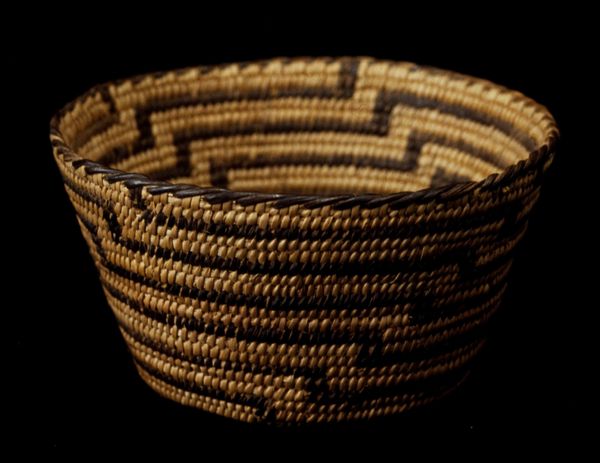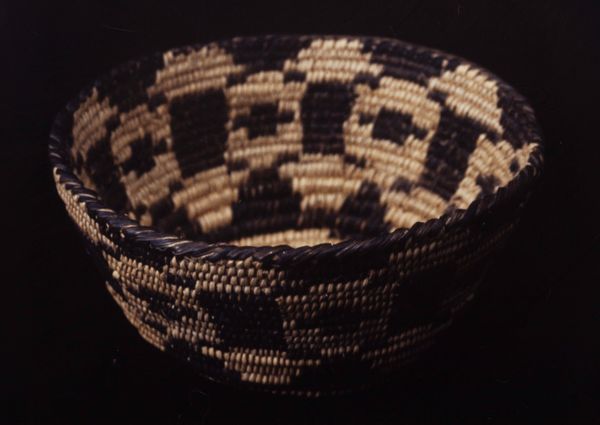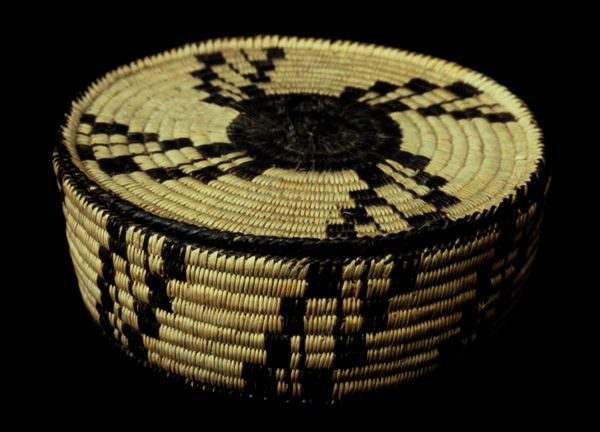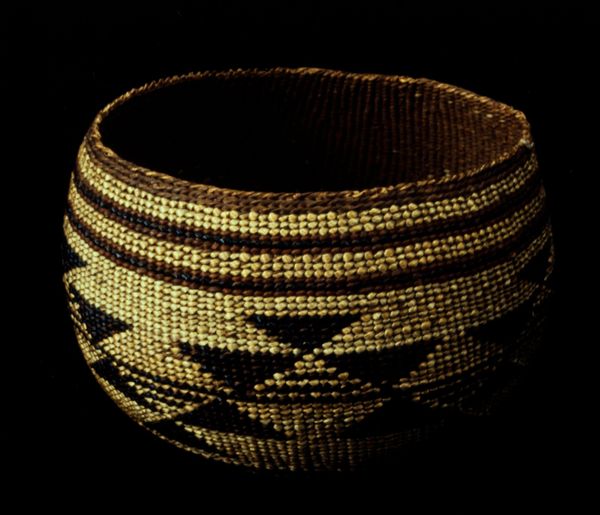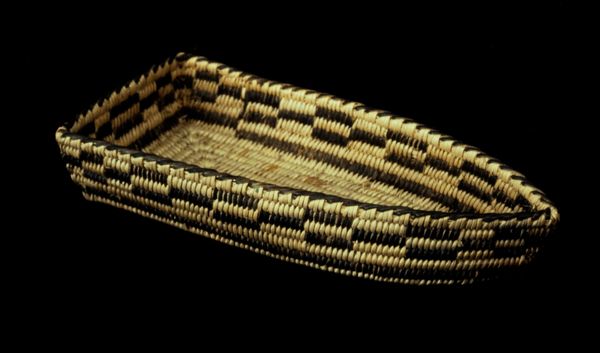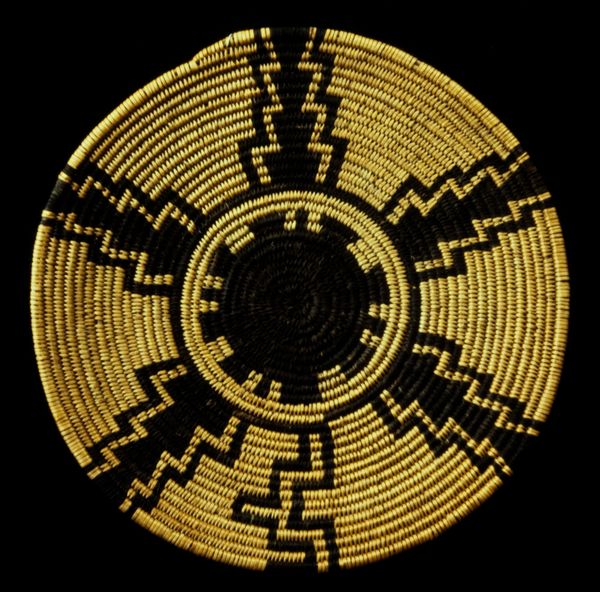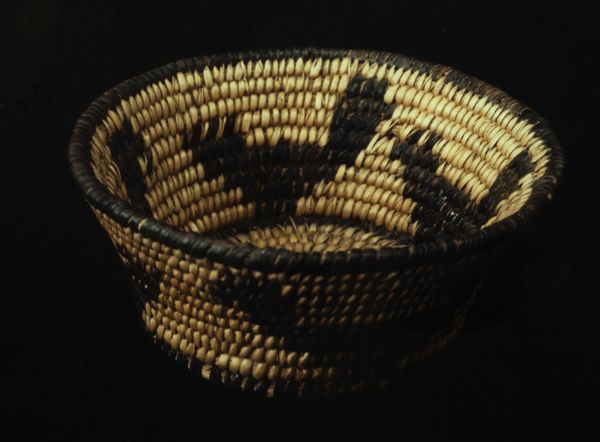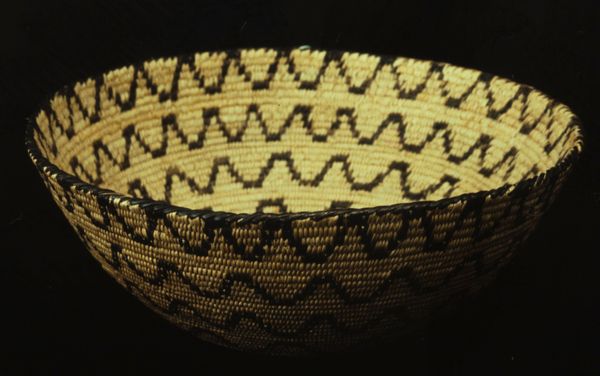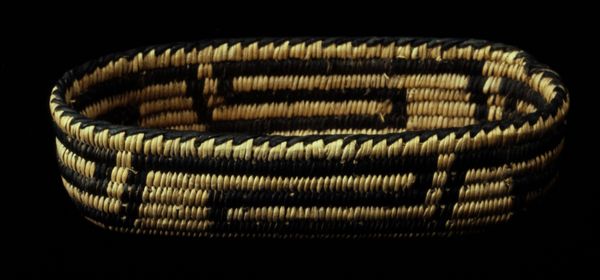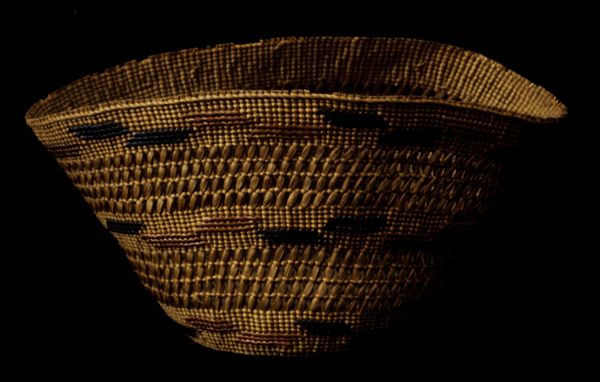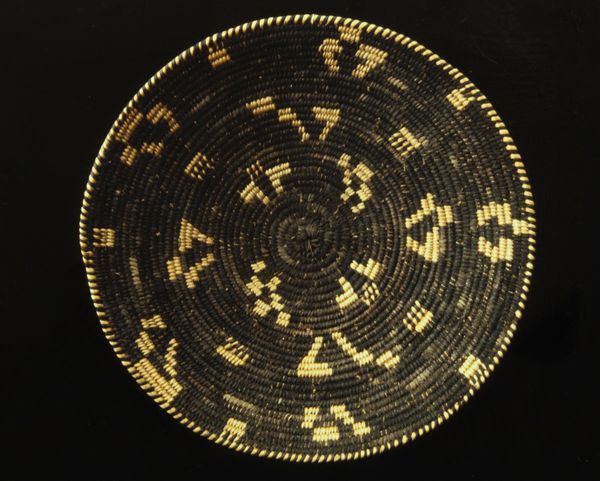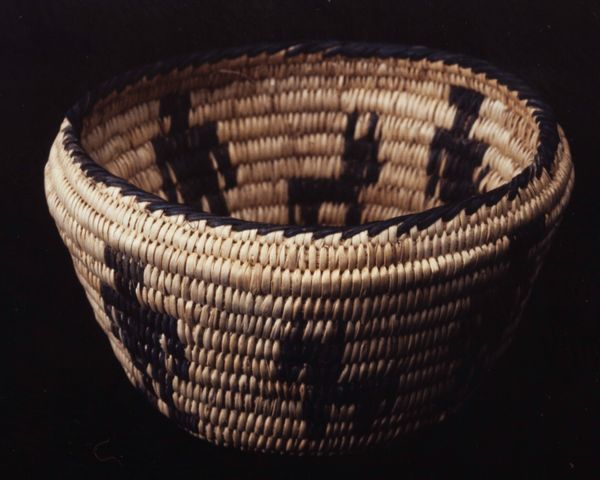
fibre-art, weaving, textile
#
fibre-art
#
weaving
#
textile
#
geometric
#
indigenous-americas
Dimensions: 4 3/4 x 11 5/8 x 11 5/8 in. (12.1 x 29.5 x 29.5 cm)
Copyright: Public Domain
This basket was woven by an artist of the Tohono O’odham, or Papago, people. Though its date is unknown, the basket’s form and decoration offer insights into the cultural and economic context of its creation. The Tohono O’odham are native to the Sonoran Desert, a region spanning parts of Arizona and Mexico. Basketry is a longstanding tradition among them, used for gathering, storage, and cooking. But baskets like this one, with its complex geometric designs, were increasingly made for sale to tourists and collectors from the late 19th century onward. This economic shift had a major impact on the art form. New designs were introduced and older designs took on new meaning as they circulated in the art market. By consulting historical sources like ethnographic studies, museum collections, and trade records, we can trace the evolution of basketry and its role in shaping cultural identity and economic opportunity.
Comments
minneapolisinstituteofart almost 2 years ago
⋮
These shapes were most commonly made for the tourist market by the Akimel O’othom and Tohono O’odham in the mid twentieth century. During their construction, while the materials are moist and soft, the walls or sides of the basket are pounded between two stones. This flattens the coils and produces a very smooth, level surface.
Join the conversation
Join millions of artists and users on Artera today and experience the ultimate creative platform.


